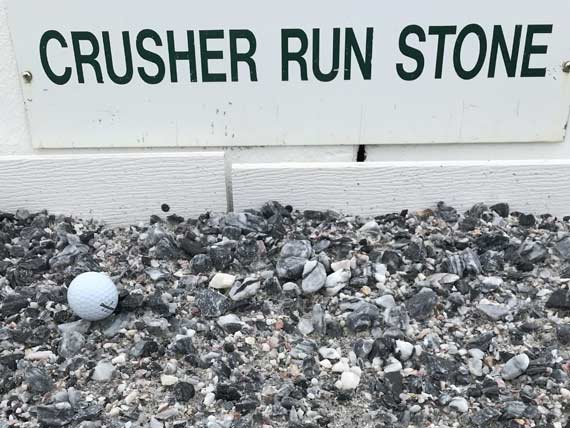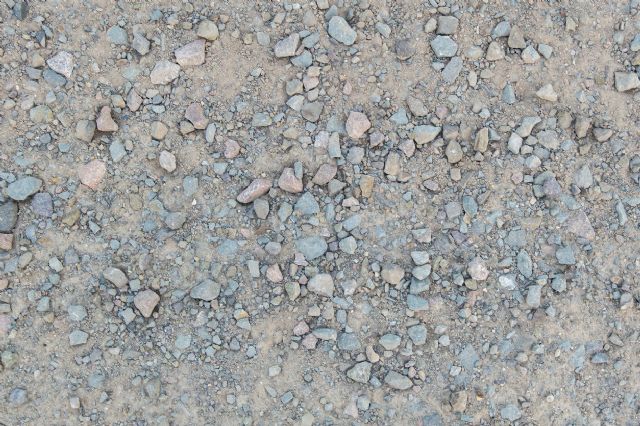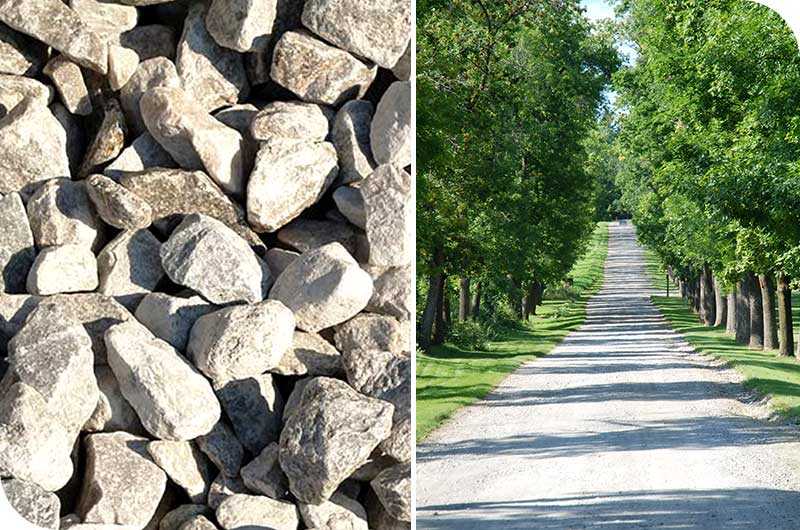

Other important uses include in road construction, as road base or in blacktop as construction fill and in myriad minor uses. It is estimated that almost half of construction sand and gravel is used as aggregate for concrete. This greatly exceeds production of industrial sand and gravel (68 million tons), which is mostly sand rather than gravel. Some 960 million tons of construction sand and gravel were produced. In 2020, sand and gravel together made up 23% of all industrial mineral production in the U.S., with a total value of about $12.6 billion. Sand is not usually distinguished from gravel in official statistics, but crushed stone is treated as a separate category. Gravel is a major basic raw material in construction. It has been suggested that wind-formed ( aeolian) gravel "megaripples" in Argentina have counterparts on the planet Mars. The upper Mississippi embayment contains extensive chert gravels thought to have their origin less than 100 miles (160 km) from the periphery of the embayment. Gravel is deposited as gravel blankets or bars in stream channels in alluvial fans in near-shore marine settings, where the gravel is supplied by streams or erosion along the coast and in the deltas of swift-flowing streams. The rock fragments are rapidly rounded as they are transported by rivers, often within a few tens of kilometers of their source outcrops. Exceptions include quartz veins, pegmatites, deep intrusions, and high-grade metamorphic rock. Most gravel particles consist of multiple mineral grains, since few rocks have mineral grains coarser than about 8 millimeters (0.31 in) in size.

Quartz is the most common mineral found in gravel, as it is hard, chemically inert, and lacks cleavage planes along which the rock easily splits. Most gravel is derived from disintegration of bedrock as it weathers. Natural gravel has a high hydraulic conductivity, sometimes reaching above 1 cm/s.
#CRUSHER RUN GRAVEL ISO#
ISO 14688 for soil engineering grades gravels as fine, medium, and coarse with ranges 2 mm to 6.3 mm to 20 mm to 63 mm. Army Corps of Engineers defines gravel as particles under 3 in (76 mm) in size that are retained by a number 4 mesh, which has a mesh spacing of 4.76 mm (0.187 in). Department of Agriculture and the Soil Science Society of America define gravel as particles from 2 to 80 mm (0.079 to 3.150 in) in size, while the German scale (Atterburg) defines gravel as particles from 2 to 200 mm (0.079 to 7.874 in) in size. This corresponds to all particles with sizes between coarse sand and cobbles. The Udden-Wentworth scale, widely used by geologists in the US, defines granular gravel as particles with a size from 2 to 4 mm (0.079 to 0.157 in) and pebble gravel as particles with a size from 4 to 64 mm (0.16 to 2.52 in). Gravel is sometimes distinguished from rubble, which is loose rock particles in the same size range but angular in shape.

Many geologists define gravel simply as loose rounded rock particles over 2 mm (0.079 in) in diameter, without specifying an upper size limit. The technical definition of gravel varies by region and by area of application. The American construction industry distinguishes between gravel (a natural material) and crushed stone (produced artificially by mechanical crushing of rock.) Sand and gravel separator in a gravel pit in GermanyĬolloquially, the term gravel is often used to describe a mixture of different size pieces of stone mixed with sand and possibly some clay. Much of the rest is used for road construction, either in the road base or as the road surface (with or without asphalt or other binders.) Naturally occurring porous gravel deposits have a high hydraulic conductivity, making them important aquifers. Almost half of all gravel production is used as aggregate for concrete.

Gravel is an important commercial product, with a number of applications. One cubic metre of gravel typically weighs about 1,800 kg (or a cubic yard weighs about 3,000 lb). ISO 14688 grades gravels as fine, medium, and coarse, with ranges 2–6.3 mm to 20–63 mm. In the Udden-Wentworth scale gravel is categorized into granular gravel (2–4 mm or 0.079–0.157 in) and pebble gravel (4–64 mm or 0.2–2.5 in). Gravel is classified by particle size range and includes size classes from granule- to boulder-sized fragments. Gravel occurs naturally throughout the world as a result of sedimentary and erosive geologic processes it is also produced in large quantities commercially as crushed stone. Gravel / ˈ ɡ r æ v əl/ is a loose aggregation of rock fragments. Gravel (largest fragment in this photo is about 40 mm (1.6 in))


 0 kommentar(er)
0 kommentar(er)
